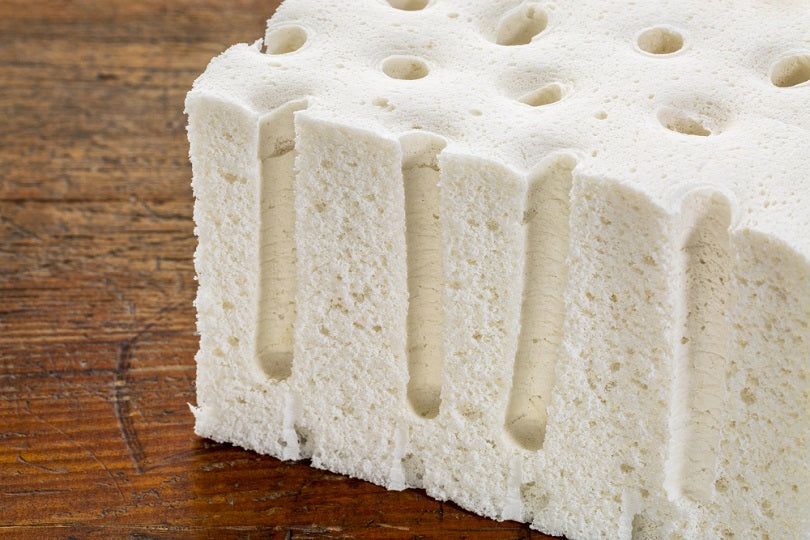Naturlatex hat sich zu einer beliebten Wahl für umweltbewusste Schläfer entwickelt – und das aus gutem Grund. Er ist langlebig, stützend, von Natur aus hypoallergen und wird aus nachwachsenden Bäumen gewonnen. Doch wie gelangt dieses unglaubliche Material vom Baum im Tropenwald in die Komfortschicht Ihrer Naturalist-Matratze ? Wir gehen den Prozess Schritt für Schritt durch.
1. Der Gummibaum – Quelle der Natur
Naturlatex wird aus dem Saft des Hevea brasiliensis- Baums gewonnen. Diese Bäume wachsen in tropischen Klimazonen, vor allem in Ländern wie Sri Lanka, Indien, Thailand und Vietnam. Sie werden auf Plantagen angebaut, die über 20 Jahre lang Latex produzieren können, ohne den Baum zu schädigen.
2. Den Baum anzapfen
Die Latexgewinnung ist ein nachhaltiger Prozess. Facharbeiter machen einen kleinen, präzisen Schnitt in die Baumrinde, sodass der Saft – bekannt als Latex – langsam in einen Auffangbehälter fließt. Dieser Vorgang, das sogenannte „Anzapfen“, wird regelmäßig wiederholt, schadet dem Baum jedoch nie.
3. Sammeln und Filtern des Latex
Nach der Sammlung wird der Rohlatex gefiltert, um alle Verunreinigungen wie Rinde oder Schmutz zu entfernen. In diesem Stadium ist er eine milchige Flüssigkeit – frisch, rein und bereit für die Verarbeitung.
4. Schäumen und Formen
Der Latex wird zu einem schaumigen Schaum geschlagen, der dann in Formen gegossen wird. Je nach gewünschter Festigkeit und Struktur kommen unterschiedliche Formverfahren zum Einsatz – die beiden gängigsten sind das Dunlop-Verfahren und das Talalay-Verfahren .
• Dunlop-Latex : dichter, fester und wird häufig für Stützschichten verwendet.
• Talalay-Latex : weicher, leichter, ideal für Komfortschichten.
5. Vulkanisation – Strukturbildung
Der geschäumte Latex wird erhitzt (vulkanisiert), um seine Struktur zu stabilisieren und ihm Elastizität und Widerstandsfähigkeit zu verleihen. Dieser Schritt erhält die stützenden Eigenschaften, die Naturlatex so komfortabel und langlebig machen.
6. Waschen und Trocknen
Nach der Vulkanisation wird der Latex gründlich gewaschen, um alle Proteinrückstände und Verunreinigungen zu entfernen. Dieser Schritt ist wichtig, um sicherzustellen, dass das Material hypoallergen und geruchsfrei bleibt. Anschließend wird der Latex vollständig getrocknet.
7. Zuschnitt und Formgebung für Matratzen
Die fertigen Latexplatten oder -kerne werden zugeschnitten und können zu einer Matratze verarbeitet werden. Bei der Naturalist-Matratze werden diese Schichten mit Bio-Wolle, Baumwolle und Kokosfasern kombiniert, um Atmungsaktivität, Feuchtigkeitsregulierung und natürlichen Komfort zu gewährleisten.
8. Zertifizierung und Qualitätskontrolle
Hochwertiger Naturlatex trägt häufig die GOLS-Zertifizierung (Global Organic Latex Standard) . Diese garantiert, dass er aus biologisch angebauten Kautschukbäumen gewonnen und ohne schädliche Chemikalien verarbeitet wird. Jede Charge wird auf Konsistenz, Haltbarkeit und Reinheit geprüft, bevor sie bei Ihnen zu Hause eintrifft.
Warum ist das wichtig?
Wenn Sie sich für eine Matratze aus Naturlatex entscheiden, entscheiden Sie sich für:
• Nachhaltigkeit – eine erneuerbare Ressource mit geringem ökologischen Fußabdruck
• Gesundheit – hypoallergen, staubmilbenresistent und frei von giftigen Schäumen
• Haltbarkeit – lang anhaltender Komfort, der seine Form über Jahre behält
Wenn Sie auf der Naturalist-Matratze schlafen, erholen Sie sich nicht nur besser – Sie schlafen auf einer Geschichte, die in einem lebenden Baum begann und in einem gesünderen, bewussteren Schlafzimmer endete.

